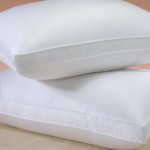The bathroom is often a damp and dimly lit space, which can breed bacteria and germs. It is important to maintain a clean bathroom to prevent the spread of these harmful agents. How often should you clean your bathroom to keep it sparkling clean and hygienic? Let’s explore this question and discover the ideal cleaning frequency for a healthy and pleasant bathroom experience.
1 How Often Should You Clean Your Bathroom?
The recommended cleaning frequency for bathrooms is once a week. Bathrooms, with their many nooks and crannies, require a thorough and detailed cleaning approach. Soap scum and residue can build up over time, causing discoloration on walls and sinks. A weekly deep clean will help maintain a pristine bathroom environment.
 Keep your bathroom clean with a weekly cleaning routine.
Keep your bathroom clean with a weekly cleaning routine.
General Tidying:
Start by doing a quick scan of the bathroom. Dispose of any empty bottles or containers and toss out unused items like old cosmetics or expired medications. Empty the trash bin and wash any damp towels to prevent mildew and musty odors. These are the basic first steps to a cleaner bathroom.
 Begin with a general tidy-up of the bathroom.
Begin with a general tidy-up of the bathroom.
Check Drain Pipes:
Many people overlook this crucial step. Inspect the drain pipes and plumbing in your bathroom to ensure they are functioning properly. Clogged pipes can lead to water backup and flooding, so it’s important to address any issues promptly. Common causes of clogs include hair buildup and soap scum accumulation.
Toilet Cleaning:
The toilet is a hotspot for bacteria. Use a disinfectant toilet cleaner to thoroughly scrub the bowl and seat. Pay special attention to the areas under the rim and around the hinges, as these tend to harbor the most germs.
Wall Tile Cleaning:
 Focus on removing soap scum from wall tiles.
Focus on removing soap scum from wall tiles.
Start from the top and work your way down when cleaning wall tiles. Divide the wall into sections to make the task more manageable. The goal here is to remove soap scum and water stains that accumulate over time.
Clean Other Bathroom Areas and Fixtures:
Don’t forget to clean the bathtub, sink, showerhead, and other fixtures. Use appropriate cleaning agents and tools to ensure a thorough job.
Mirror Cleaning:
Bathroom mirrors can become cloudy and streaky due to water splashes and soap residue. Use a suitable mirror cleaner and a soft cloth to wipe down the mirror, leaving it streak-free and sparkling.
 Keep your bathroom mirror streak-free and sparkling.
Keep your bathroom mirror streak-free and sparkling.
Floor Cleaning:
Bathroom floors can accumulate dirt, sand, and grime. Use a suitable cleaner to wash the floor, paying extra attention to corners and hard-to-reach areas. A clean floor contributes to a pleasant and hygienic bathroom experience.
Reorganize and Restock:
After cleaning, take a moment to reorganize the bathroom. Restock essentials like shampoo and body wash. You can also add air fresheners or scented candles to create a relaxing and fragrant ambiance.
We hope that these insights and recommendations on bathroom cleaning frequency will help you maintain a clean and healthy bathroom environment. Thank you for reading!
8 Common Mistakes People Make with Cutting Boards
Are you using your cutting board correctly? Many Vietnamese households rely on cutting boards in their kitchen, but not everyone knows how to use them properly, especially when it comes to wooden cutting boards. Check out these 8 mistakes to avoid when using a cutting board to ensure both hygiene and safety for everyone in your family.





































